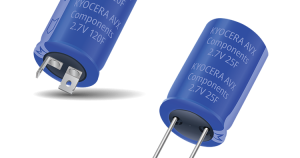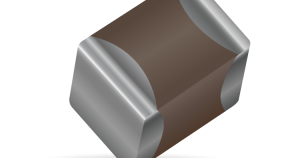BestCap®: A New Generation of Low Voltage, Low ESR, Pulse, Double Layer Capacitors Written By: Lee Shinaberger | Bharat Rawal | Chris Reynolds Abstract: Electrochemical double layer capacitors (EDLCs) produced for back up applications in the last twenty-five years had high Equivalent Series Resistance (ESR) and high loss of capacitance when used in pulse power applications. In addition, the voltages of these devices were limited to less than 5 volts. In 2000, AVX introduced the BestCap® line of capacitors to address these limitations to serve the high pulse power market. This paper will present capabilities and subsequent improvements to the BestCap® product line.
Technical Articles / Whitepapers
Lead-Free Soldering Effect On Tantalum Capacitors Written By: T. Zednicek | P. Vasina | Z. Sita | B. Vrana Abstract: Legislation is being developed worldwide to reduce the lead content in many consumer electronic products. This is being taken as an action to reduce environmental impact when such products are discarded. Despite the fact that lead containing solders in electronic assemblies account for only 0.49% of world lead consumption, the trend in legislation will likely be to require not only reduced lead content, but also its complete elimination in such products. There are three principal sources of lead in electronic circuit assemblies; the solderable traces on the circuit card, the solderable finish on the components themselves and the solder alloy
Enhancing Cellphone Battery Performance During GSM Pulses Through the Use of a Parallel SuperCapacitor Written By: Ron Demcko | Patrick German Abstract: With the constant addition of features and functionality, battery life and reliability are becoming increasingly vital to those who rely on their smartphones. The transmission signal requires quick pulses of current from the battery, potentially causing the instantaneous voltage of the battery to drop below the phone’s minimum voltage of operation. This may cause the power to the battery to be temporarily interrupted. A series of tests were performed on multiple battery chemistries to determine the beneficial effect of placing an AVX supercapacitor in parallel with the battery, to improve the life of the battery as well as
Ceramic Multilayer Capacitors in HF SMPS Applications Written By: John Prymak Abstract: There has been an explosion of interest in the use of ceramic capacitors for high frequency power conversion applications. This interest is compounded with new designs striving for higher frequencies, smaller sizes and greater efficiencies. This application is an ongoing and mutual development of ceramic values, processes and sizes that were never realized prior to this application. In more and more cases, the ceramic capacitor is dictated by performance requirements never attainable in the previous styles of electrolytic and tantalum.
Output Filter Capacitors for Mission Critical Applications Written By: Pat Hollenbeck Abstract: The constancy and regularity of output voltage in a DC/DC output network is critical in SMPS (switched-mode power supplies) electronic performance. When different input and output voltages are required in the circuitry, output filter capacitors are required to maintain current uniformity and reduce noise. This document discusses the effect of capacitors on output power quality. It evaluates and provides a comparison of different capacitor technologies, their high reliability qualification availability from COTS+ to space level, and their impact on the output filtering capabilities in switching power supplies primarily used for mission critical applications.
Thin Film Filter Design and Technology Written By: George Korony Abstract: When specifying filter for a design, the admissible insertion loss and frequency range in the pass-band, the required attenuation and frequency ranges in the forbidden-bands, are the most important characteristics of filters. Several other important parameters are also required to define a filter, including functional parameters as input output impedances, power handling capabilities, and reliability requirements, as well as physical requirements such as dimensions, input-output type (wire-bond, SMT, BGA), and encapsulation. Other conditions may be imposed by special applications (space, automotive, medical)






